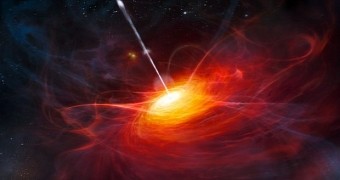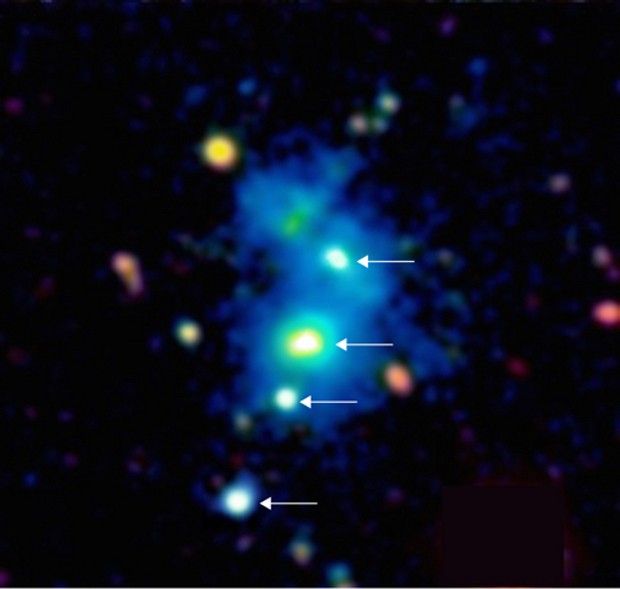A research paper published in yesterday's issue of the journal Science announces the discovery of a black hole quartet at a distance of approximately 10 billion light-years away from our home in space.
The black holes, discovered with the help of the W. M. Keck Observatory in Hawaii, lie hidden in the core of a nebula of cool dense gas.
According to Joseph Hennawi of the Max Planck Institute for Astronomy, the discovery of these black holes marks the first time four active black holes have been documented so close to one another.
The black holes sport an insanely bright halo
They might be black holes but, by the looks of it, these newly discovered cosmic structures have halos that are shining insanely bright. Or at least they did 10 billion years ago, when the light that led to their discovery left them and headed our way.
“Because the light from this cosmic metropolis has been traveling for 10 billion years before reaching Earth, the images show the region as it was 10 billion years ago,” astronomers explain.
As detailed by researcher Joseph Hennawi and his team, such super bright compact regions around black holes are known to the scientific community as quasars. It is believed that they form when matter falls into the black holes and is gobbled up.
In their prime, quasars are the most luminous objects in the cosmos. They can even outshine their home galaxies several hundred times over. The bad news is that they have a fairly short lifespan and therefore are quite tricky to find and study.
How the rare quadruple quasar came into being
As mentioned, the quadruple quasar resides in the midsts of a nebula of cool and dense gas. In turn, this nebula is located in a cosmic neighborhood characterized by a bonanza of matter.
“There are several hundred times more galaxies in this region than you would expect to see at these distances,” says University of California Santa Cruz astronomer J. Xavier Prochaska.
Scientists suspect that it was this very specific environment that jump-started quasar activity around the four black holes simply by providing enough matter for not just one but all of them to build bright halos for themselves.

 14 DAY TRIAL //
14 DAY TRIAL // 

